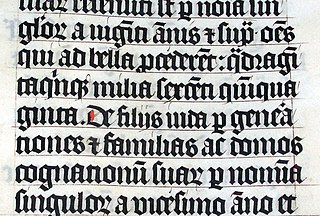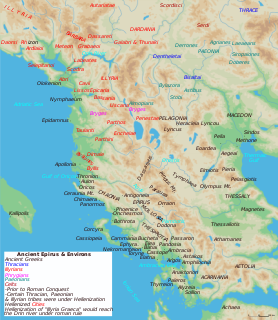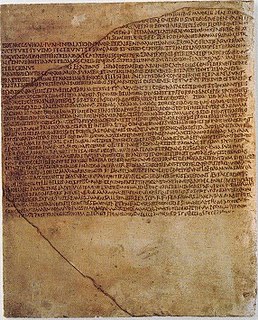
An alphabet is a standard set of letters that represent the phonemes of any spoken language it is used to write. This is in contrast to other types of writing systems, such as syllabaries and logographic systems.

F is the sixth letter in the modern English alphabet and the ISO basic Latin alphabet.
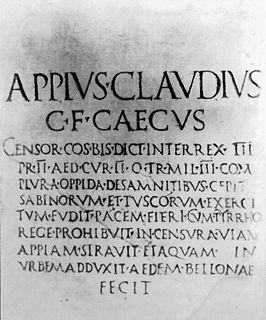
Latin spelling, or Latin orthography, is the spelling of Latin words written in the scripts of all historical phases of Latin from Old Latin to the present. All scripts use the same alphabet, but conventional spellings may vary from phase to phase. The Roman alphabet, or Latin alphabet, was adapted from the Old Italic script to represent the phonemes of the Latin language. The Old Italic script had in turn been borrowed from the Greek alphabet, itself adapted from the Phoenician alphabet. The Latin alphabet most resembles the Greek alphabet around 540 BC, as it appears on the black-figure pottery of the time.
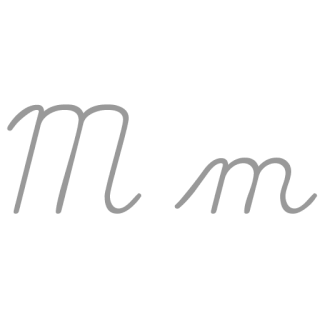
M is the thirteenth letter of the modern English alphabet and the ISO basic Latin alphabet.

N is the fourteenth letter in the modern English alphabet and the ISO basic Latin alphabet.
In phonetics, a stop, also known as a plosive or oral occlusive, is a consonant in which the vocal tract is blocked so that all airflow ceases.
Transliteration is a type of conversion of a text from one script to another that involves swapping letters in predictable ways.

V is the 22nd letter in the modern English alphabet and the ISO basic Latin alphabet.
A breve is the diacritic mark ˘, shaped like the bottom half of a circle. As used in Ancient Greek, it is also called vrachy, or brachy. It resembles the caron but is rounded; the caron has a sharp tip.
Rho is the 17th letter of the Greek alphabet. In the system of Greek numerals, it has a value of 100. It is derived from Phoenician letter res . Its uppercase form uses the same glyph, Ρ, as the distinct Latin letter P; the two letters have different Unicode encodings.
The Greek alphabet has been used to write the Greek language since the late ninth or early eighth century BC. It is derived from the earlier Phoenician alphabet, and was the first alphabetic script to have distinct letters for vowels as well as consonants. In Archaic and early Classical times, the Greek alphabet existed in many different local variants, but, by the end of the fourth century BC, the Eucleidean alphabet, with twenty-four letters, ordered from alpha to omega, had become standard and it is this version that is still used to write Greek today. These twenty-four letters are: Α α, Β β, Γ γ, Δ δ, Ε ε, Ζ ζ, Η η, Θ θ, Ι ι, Κ κ, Λ λ, Μ μ, Ν ν, Ξ ξ, Ο ο, Π π, Ρ ρ, Σ σ/ς, Τ τ, Υ υ, Φ φ, Χ χ, Ψ ψ, and Ω ω.

De is a letter of the Cyrillic script.
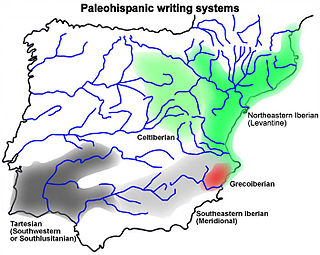
The Celtiberian script is a Paleohispanic script that was the main writing system of the Celtiberian language, an extinct Continental Celtic language, which was also occasionally written using the Latin alphabet. This script is a direct adaptation of the northeastern Iberian script, the most frequently used of the Iberian scripts.
Romanization of Greek is the transliteration (letter-mapping) or transcription (sound-mapping) of text from the Greek alphabet into the Latin alphabet. The conventions for writing and romanizing Ancient Greek and Modern Greek differ markedly, which can create confusion. The sound of the English letter B was written as β in ancient Greek but is now written as the digraph μπ, while the modern β sounds like the English letter V instead. The Greek name Ἰωάννης became Johannes in Latin and then John in English, but in Greek itself has instead become Γιάννης; this might be written as Yannis, Jani, Ioannis, Yiannis, or Giannis, but not Giannes or Giannēs as it would have been in ancient Greek. The masculine Greek word Ἅγιος or Άγιος might variously appear as Hagiοs, Agios, Aghios, or Ayios, or simply be translated as "Holy" or "Saint" in English forms of Greek placenames.
Ancient Greek phonology is the description of the reconstructed phonology or pronunciation of Ancient Greek. This article mostly deals with the pronunciation of the standard Attic dialect of the fifth century BC, used by Plato and other Classical Greek writers, and touches on other dialects spoken at the same time or earlier. The pronunciation of Ancient Greek is not known from direct observation, but determined from other types of evidence. Some details regarding the pronunciation of Attic Greek and other Ancient Greek dialects are unknown, but it is generally agreed that Attic Greek had certain features not present in English or Modern Greek, such as a three-way distinction between voiced, voiceless, and aspirated stops ; a distinction between single and double consonants and short and long vowels in most positions in a word; and a word accent that involved pitch.
The orthography of the Greek language ultimately has its roots in the adoption of the Greek alphabet in the 9th century BC. Some time prior to that, one early form of Greek, Mycenaean, was written in Linear B, although there was a lapse of several centuries between the time Mycenaean stopped being written and the time when the Greek alphabet came into use.
